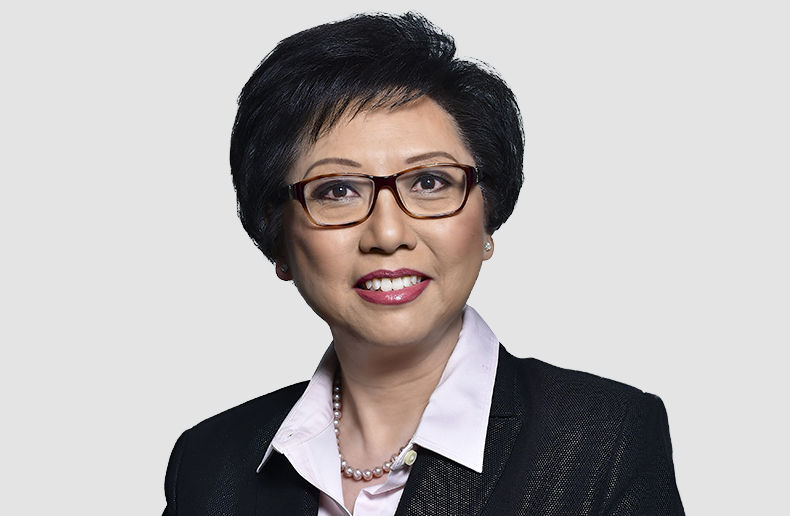Higher education in Canada is getting, well, higher, with many clients trying to calculate how they will go about helping to pay for it all. Plans that include government help, life insurance and even financial literacy have all been cited as ways to go about raising those funds.
So, how much is post-secondary school these days? Ottawa says students who go to trade school, college or university full-time can expect to pay $2,000-$6,500 a year or more just for tuition. Add in books, supplies, student fees, transportation, housing and other expenses and that can only increase the tab.
Full-time students in Canada paid an average of $16,600 for post-secondary schooling in 2014-2015, more than $66,000 for a four-year program.
Group RESP provider Heritage Education Funds estimates that a child born this year will pay $63,248 for a four-year program when they enter post-secondary school in 2035 if they live at home, or $126,690 if they live away from home.
So how is a parent supposed to help out?
One of the ways many have traditionally saved to send their children past high school is through tax-sheltered RESPs.
Since 2007, there’s been no annual contribution limit for these savings plan, but there is a lifetime limit of $50,000. From the time the money is put in until it is taken out it grows tax free. In addition, the child receives the Canada Education Savings Grant (CESG) from Ottawa worth up to $500 a year to a lifetime of $7,200. The CESG applies only on the first $2,500 in contributions per year, up to the first $5,000 in contributions (if carry forward room exists). Anyone who wants to contribute more than the $50,000 limit will not receive any grant even if the $7,200 of grant has not been reached.
On top of that, there is the Canada Learning Bond (CLB) for low-income Canadians, which provides a lifetime maximum of another $2,000 for each eligible child. Saskatchewan, Quebec and British Columbia also have incentives for their residents.
Heritage, as one of the Group RESP providers, uses several different investment styles, including fixed-income securities, corporate bonds, Canadian equities and ETFs. The aim of this investment strategy is to increase returns through diversification of products and stock market exposure, says Felix Benzimra, a dealer representative for Heritage.
Under Ottawa’s rules, if the child does not go on to post-secondary school and the RESP is closed, parents get back their principal and are allowed to keep the interest on both the principal and government grants, even though the grants themselves must be returned to the government. With the exception of the principal, all funds are subject to tax. CESG funds must be returned to the government or can be transferred without penalty to a sibling, if he or she has grant room. The CLB cannot be transferred to another child, but the interest on it can be, said Benzimra.
Parents have the option of deferring the tax payments by placing the funds in an RRSP. An RESP account can stay open until the plan turns 35 so children who haven’t made a decision yet don’t have to rush.
The federal government’s new Canada Child Benefit (CCB) has also been pegged as a potential storehouse for future education. A poll by Ipsos Reid for RESP provider Knowledge First Financial recently found that nearly one-quarter of those questioned said they planned to use the CCB to help send their children to post-secondary schools. The tax-free CCB, which replaces the Canada Child Tax Benefit and the Universal Child Care Benefit, provides each child under six with a maximum $6,400 a year, while those six to 17 receive $5,400 a year. The tax-free benefit is aimed mostly at low- and middle-income Canadians.
The Investment Funds Institute of Canada (IFIC) recently released a government submission recommending changes to improve the awareness of available government programs by funding a joint awareness campaign that produces common messaging and materials that can be distributed through a number of channels, including financial advisors.
IFIC also suggests that the government do away with yearly CESG maximums, saying it penalizes those who were not aware of the program or couldn’t participate because of financial conditions.
“If you want to boost it or maybe catch up – maybe they came from another country – then why not?” agreed Benzimra.
IFIC also recommended increasing the RESP contribution limit and the CESG maximum noting they have not risen since their inception in 1998.
“If the trend of unchanged grant amounts and continually increasing educational expenses continues, average Canadians will be discouraged from investing in higher education as the amounts they can save in their RESPs will be dwarfed by the educational expenses their children will face,” IFIC stated in its submission.
Par whole life
Another product that can help children pay for their education – or help pay for a home or be part of their personal retirement plan – is participating whole life insurance.
While the contract has been around for 170 years, it’s getting a refresh from Michael Lampel, the president and founder of Insurance for Children and its product, Child Plan. He’s teamed up with Equitable Life to sell its product under the Child Plan banner.
The plan combines guaranteed cash values and tax-free annual dividends with permanent whole life insurance. Under it, either a parent or grandparent can be the owner of the contract, with the child being the insured. The (grand)parent holds the contract as a trust and pays the premiums. An average premium is $208 a month or $2,500 a year, said Lampel.
Because it is a participating policy, the person who owns the policy also “participates” in the profits of the insurance company. If the policy was purchased before the child is one-year-old, by the time he or she has grown to 21, the policy would be fully funded and no other premiums are required, he said. At that time, using the averages above, the cash value of the plan would stand at $76,900 with a life insurance value of more than $600,000. This is the time when the funds could be accessed for education purposes.
There are a number of options that can now benefit the adult child: take a dividend and its tax-efficient capital gains, take a partial amount of cash value, borrow against the policy, cancel the policy outright and take out all the cash value, which would involve some tax consequences, or leave the policy as is.
Using the same scenario above, by the time the adult child is 35, the accumulated cash value will be more than $200,000 and a life insurance value of more than $1.1 million. If no money is removed from the plan, at age 65 the life insurance will have grown to more than $2.3 million and the cash value more than $1 million, which could then be used as a the person’s personal pension plan.
Lampel says the re-introduction of the product coincided with a mini baby boom that began in 2014. “Everybody said we had a greying population, but I noticed something else,” he said. “Women had been delaying having children until they are past 30, which means the 1980 children weren’t starting to have their own children until 2012.”
Learning the value of money
A big problem for the general public is that many people are not sure how to handle money or save for a child’s education. As well, many children don’t know the value of money, how to work for it and how to save it.
Enter Sean Long, a consultant with Education Credit Union in Kitchener-Waterloo, Ontario, which started offering financial literacy classes to students in May. To his surprise, adults started showing up as well.
“I was a bit shocked in the beginning about what they don’t know, because they don’t know anything,” said Long.
He said the credit union decided to commit to this teaching program for five years rather than sit back and wait passively for people to come in and ask questions. With school board approval, it is now taking the classes to all the schools in the Kitchener-Waterloo-Cambridge area, teaching children about ways to make and save money and the purpose of taxes, like HST.
To make children more responsible for themselves, classes are broken into two groups with the 13-year-olds showing the younger kids the difference between the cost of an object versus its value. Long said the purpose of this is to get children to save for themselves to buy their parents small birthday or holiday gifts and give them the grounding they need to start saving for themselves.
The role of advisors
Financial advisors also have a key role to play in financial literacy, how they can help save for their children’s education and what government programs are out there to support them, says Helena Smeenk Pritchard, a life insurance trainer and coach.
“My approach when I’m coaching is that selling is not about telling; it’s about asking questions,” she said. “The advisor needs to have the right questions in order to be able to understand what the parents’ priorities are. Then the advisor’s responsibility is to outline the cost of an object versus its value of all of the options – RESPs, TFSAs and different life insurance options.”







